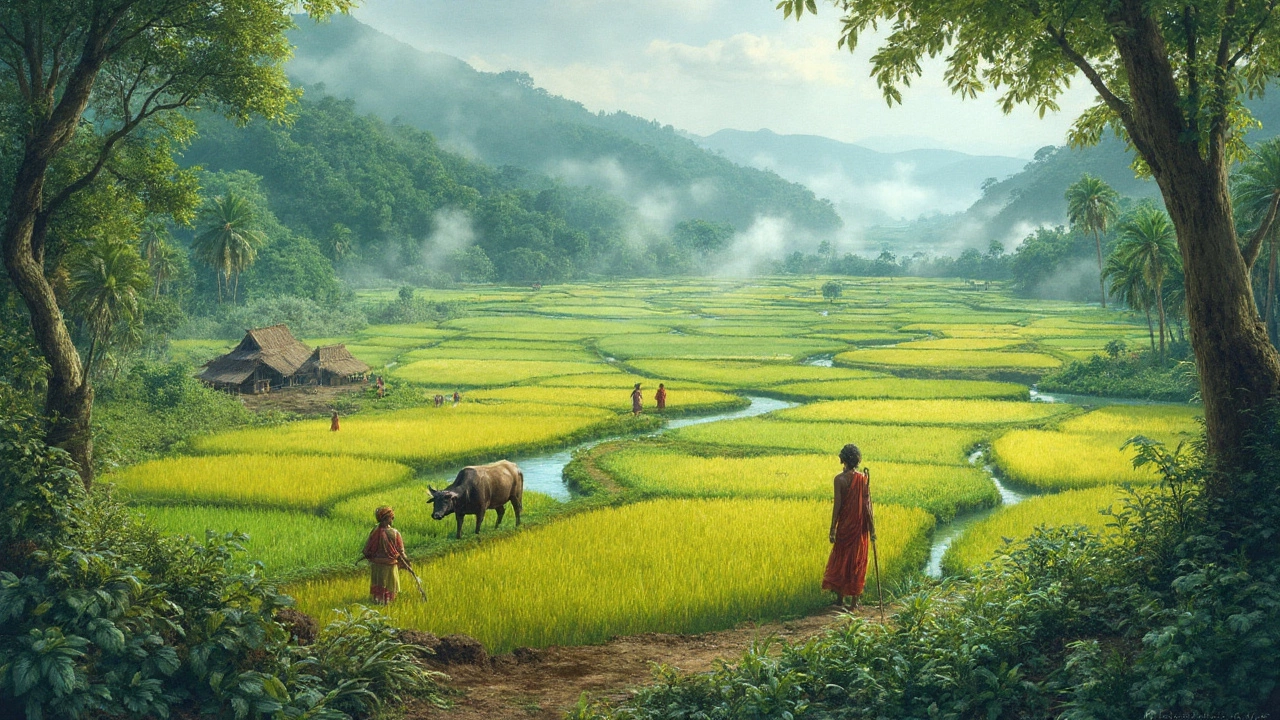History of Rice
When talking about history of rice, the story of how a tiny grain shaped civilizations, economies, and traditions. Also known as rice, it traces back over 9,000 years to the river valleys of Asia. The paddy cultivation, the flooded field method that first turned wild grasses into a reliable food source sparked the first agricultural revolutions, while rice varieties, the countless strains like basmati, jasmine, and indica that adapted to different climates expanded the grain’s reach across continents.
Why does this matter? Because the history of rice isn’t just about farming; it’s a web of trade, culture, and technology. The ancient rice trade, caravans and ships that moved grain from the Yangtze to the Mediterranean linked empires, funded wars, and introduced new cuisines. Meanwhile, seasonal festivals like India’s Pongal or Japan’s Niigata Rice Festival turned harvests into communal celebrations, embedding rice into spiritual life. Those cultural festivals, rituals that honor the grain’s bounty still echo the ancient gratitude farmers felt for a reliable crop.
Key milestones in rice's journey
First, the domestication phase in the Yangtze River basin gave humans a steady calorie source, allowing settlements to grow. Next, the spread to South Asia introduced the hardy indica strain, which thrived in monsoon climates and fed growing populations in the Indus Valley. By the medieval period, rice had reached the Middle East via the Silk Road, where it entered Ottoman and Persian kitchens, prompting new cooking methods like pilaf. The Columbian Exchange later carried Asian rice to the Americas, where it found a home in the Southern United States, especially in Arkansas and the Mississippi Delta, creating a new rice‑producing region.
Each of these phases shows a clear semantic connection: the history of rice encompasses paddy cultivation, which requires water management; rice varieties demand specific climatic conditions; rice trade influences regional economies; and cultural festivals celebrate the harvest. Understanding these links helps readers see why a simple grain can drive technology, shape diets, and even affect geopolitics.
Below you’ll find a curated list of articles that dig deeper into specific aspects—how much rice one person needs for a year, whether rice regrows each season, and which U.S. states dominate production. Whether you’re a gardener curious about growing your own paddy, a historian tracking ancient trade routes, or just anyone who loves a bowl of rice, the collection offers practical insights and fascinating stories that build on the rich history laid out here.
Which Civilization First Invented Rice? A Journey Through Ancient Rice Cultures
Discover which culture invented rice, tracing its ancient origins and global journey. Learn fascinating facts about rice cultivation, traditions, and impact.
- manufacturing
- India
- food processing
- garden tips
- rice cultivation
- government schemes
- balcony garden
- urban gardening
- balcony gardening
- profitable business
- business ideas
- plastic manufacturing
- drip irrigation
- plant care
- steel manufacturing
- sustainable gardening
- startup ideas
- steel industry
- flower gardening
- textile manufacturers






